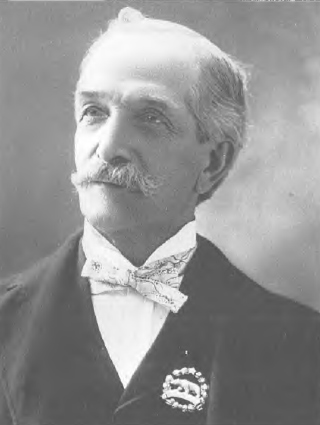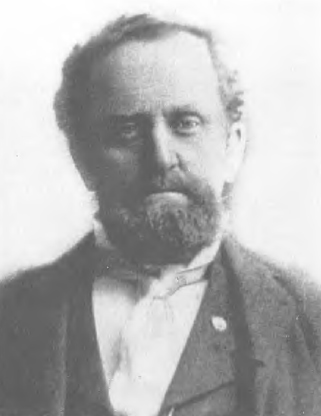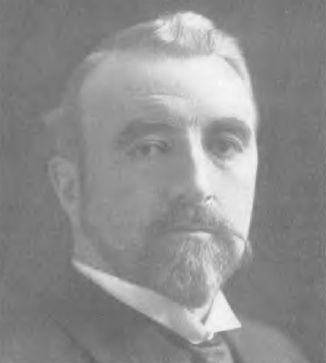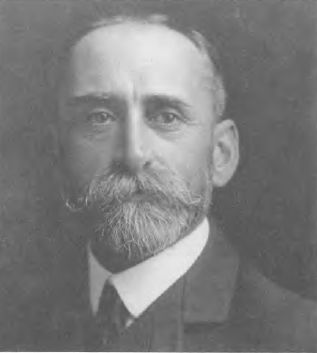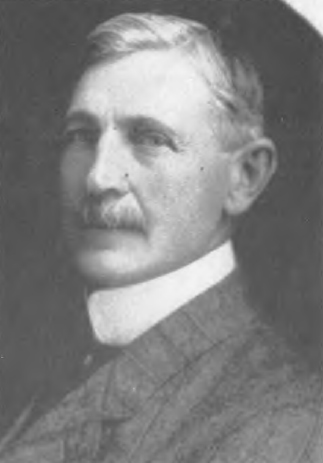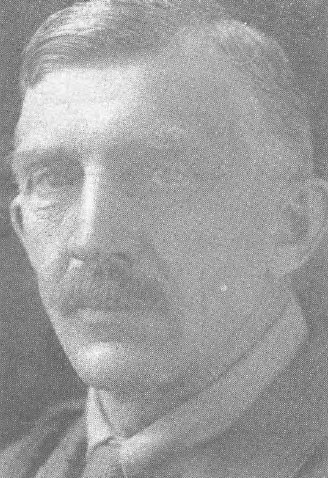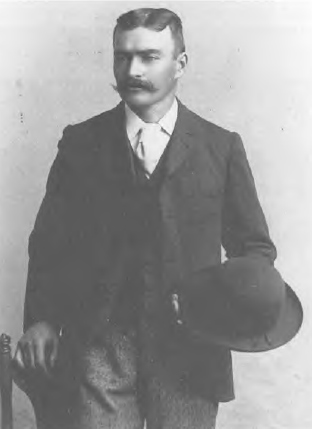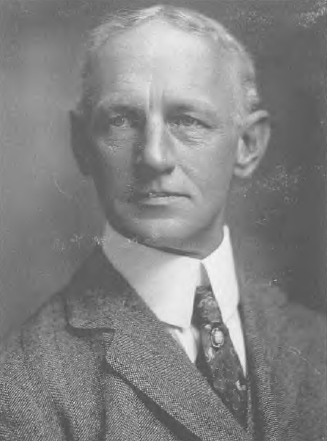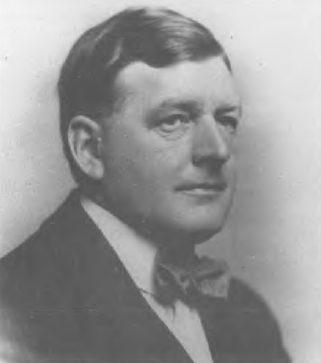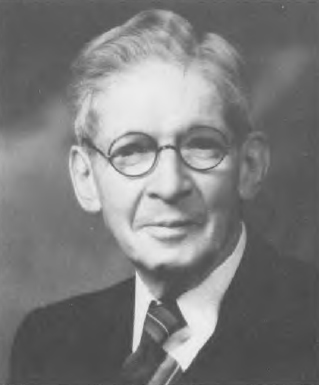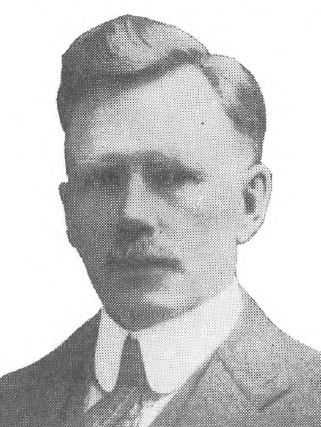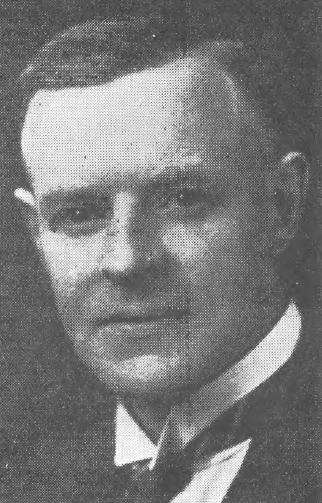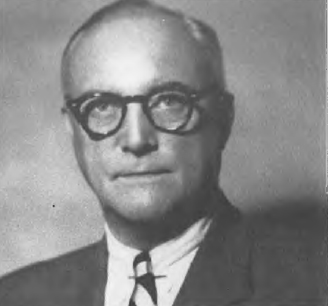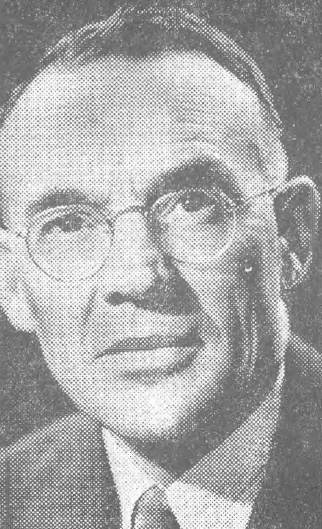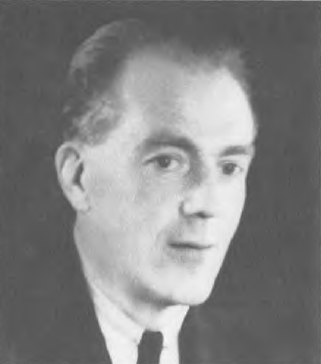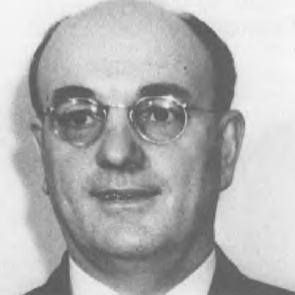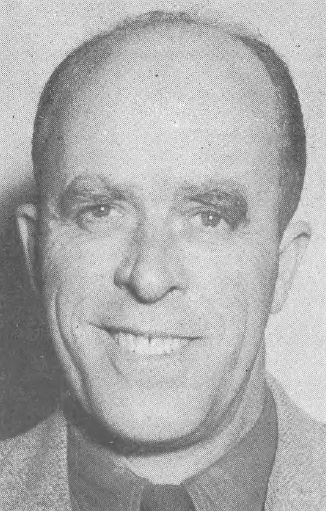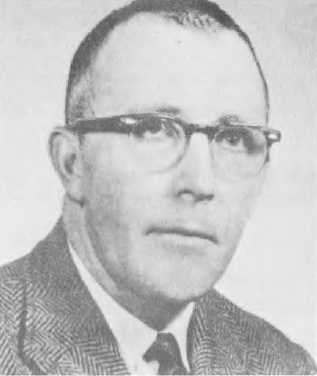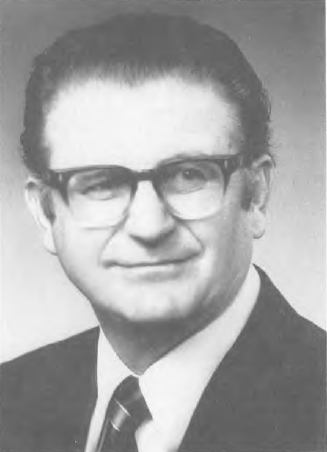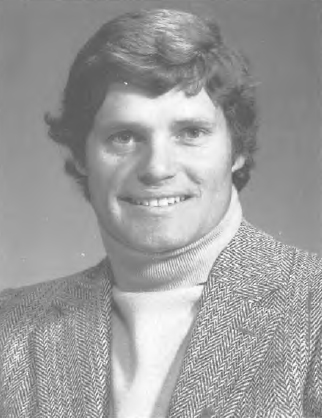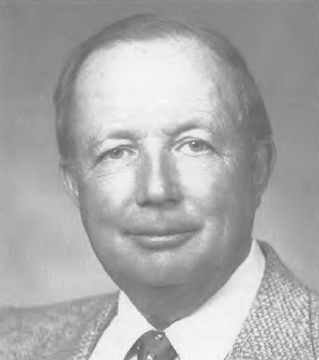News & Events More |
Appendix A - The Presidents of the B.C.F.G.ABiographical Sketches of the PresidentsA few of the Presidents are not included in these sketches. Biographical information about them was not available. W. J. Harris President, 1890-1892The connection of Wellington Jeffries Harris to the Fraser Valley went back long before settlement began on the mainland of British Columbia. As a child in St. Andrews, Ontario, in the 1850s, Harris knew the elderly Simon Fraser, who had retired there. The old explorer advised the boy to go west and acquire land in the Fraser Valley ahead of the construction of the transcontinental railway which Fraser was confident would be built. In 1873 Harris did just that, bringing his wife and two young children out to a homestead in Pitt Meadows, just west of Maple Ridge. When the railway was finally built, ten years later, it ran right through the middle of the Harris farm. Harris hired on as a foreman during the railway construction, and had the experience of having to quell a strike by Chinese labourers, claimed to have been the first strike in British Columbia. This he did with a loaded revolver in hand. He went on to become the first warden of the municipality of Maple Ridge. John Kirkland President, 1893-1894John Kirkland came to British Columbia from Ontario in 1872. He settled at Ladner, where he took up 640 acres of wild land, which though fertile was completely flooded during the winter and spring. Several years of work building dykes paid off in a rich and successful mixed farm, on which he grew hay and grain as well as raising sheep and dairy cattle. He pursued excellence and improvement in all his farming; he was the first in his area to import thoroughbred cattle and sheep, and his stock won many exhibition medals. Fruit was a sideline on his farm; indeed, he described himself as being only an amateur fruit grower. A sincere and serious Methodist, he "did not swear, partook of nothing stronger than tea or coffee, and considered politics merely incidental"-at least in so far as party politics went. Interested in the development of both agriculture and his community, he not only served as president of the B.C.F.G.A., but was also a member of the local municipal council from the time of its organization until his death in 1896. He served as reeve of Ladner for many years. G.W. Henry President, 1895G.W. Henry arrived in British Columbia in the spring of 1885, with the intention of going into fruit growing. "I was much surprised at the unhealthy, rough appearance of the trees, which, as a rule, represented the fruit growing orchards of the Province." But he was impressed by the high production, even under neglect, of existing plantings. In the spring of 1886 he planted two hundred apple trees which he had brought out from Ontario the previous fall. In 1889 these yielded an average of a bushel per tree. Henry also made a large planting of pears and small fruits on his farm at Port Hammond. Thomas G. Earl President, 1896-1897
Thomas Earl was born at Newark, New Jersey, in 1829. He joined the California gold rush in 1849 (in later years he proudly wore the Grizzly Bear badge which identified him as a "Forty-niner"). After an adventurous youth in California, he came to British Columbia from San Francisco during the 1858 Fraser River gold rush. He planted his first fruit trees at Lytton in 1864 and by 1875 had three hundred bearing trees. "When I first started in at fruit-growing for commercial purposes I laboured under difficulties. We had no boxes. There was a wagon road to take the fruit to the market. I used to send it to Lytton in great big Indian baskets and coal oil tins." He witnessed enormous changes in the sophistication of the fruit industry-'Tn the early days, as long as it was a good-looking apple that was all we wanted"-and in the areas where fruitgrowing was carried on. In 1918 he reminisced at the B.C.F.G.A. convention that "it is not over 25 years ago since I sold fruit in the Okanagan." Earl expanded his plantings to an eventual thirty acres of orchard. In 1913 he sold his property and retired from fruit growing, although he remained interested in the industry and continued to attend B.C.F.G.A. conventions for several more years. He died at Vancouver in 1921. G.H. HadwenPresident, 1898Gaylard Harrison Hadwen was born in Lancashire, England, in 1869, son of a cotton mill owner. He studied at the University of Lille in France, and then in 1889 emigrated to Ontario, where he spent two years at Guelph Agricultural College. He was well-versed in the scientific side of agriculture, presenting papers at B.C.F.G.A. conventions on subjects such as "Agricultural Chemistry" in 1894, "Fertilization" in 1895, "Buying Fruit-trees" in 1896, and "Canning and Preserving" in 1897. In 1891, he came west to Chemainus on Vancouver Island; after farming there for eighteen months he moved to Duncan. There, he built up "Amblecote", a farm of one hundred acres on Quamichan Lake, where he "erected substantial buildings and installed labor-saving machinery, neglecting nothing which will add to its appearance or value." He experimented with various forms of agriculturefruit, of course, and in 1896 he helped found the Cowichan Creamery. Eventually, he specialized in raising Hackney and Shropshire sheep. Tom WilsonPresident, 1899-1900Tom Wilson came to Canada from Scotland in 1886. He had studied horticulture and forestry, and had been employed as foreman at the Royal Botanical Gardens in Edinburgh and as superintendent of tea plantations in India and Burma. For construction of the C.P.R. His horticultural instincts soon took hold, however, and he established a farm, including fruit, near Harrison in the Fraser Valley. In 1892 he purchased one of the first sprayers brought into British Columbia, a hand-powered Myers Spray-pump which fitted to the top of a wooden barrel. He was a member of the B.C.F.G.A. from about 1893, and was voted an honorary life membership at the 1908 convention. An experienced field-naturalist, he collected insects for the dominion entomologist, and helped found a provincial entomological society in 1901. In 1895 and 1896 Wilson was in charge of the fruit side of Lord Aberdeen's Coldstream Ranch, near Vernon. He then returned to the Coast, where he worked as an inspector of fruit pests for the provincial Board of Horticulture, and in 1900 he was appointed superintendent of a fumigation station built at Vancouver by the federal government to control San Jose scale on imported nursery stock. In 1906 he became Inspector of Indian Orchards, responsible for teaching the Indians in British Columbia how to recognize and control insect pests in the orchards on their reserves. He had a considerable degree of success with his educational and supervisory efforts until his untimely death on March 6, 1917, when he was one of eight people killed by a fire at the Coquihalla Hotel in Hope. Henry KippPresident, 1901
The Kipp brothers, Isaac and Henry, were the pioneer settlers of Chilliwack. They left Ontario, where Henry was born near Woodstock in 1842, for the California gold mines in 1858, then joined the Cariboo rush in 1862. Failing to strike it rich there, they came to Chilliwack in 1864 to look after a herd of cattle grazed there by their cousin, Jonathan Reece. They liked the locality and so took up land and settled down. In 1899 Henry Kipp recalled that, "Thirty-five years ago, I came to this beautiful, fertile valley, and as soon as possible began fruit culture." Henry Kipp died in 1930. T.W. StirlingPresident, 1905Thomas Willing Stirling-"T.W." as he was familiarly known-entered the Royal Navy as a cadet in 1879 at the age of thirteen. He rose to the rank of lieutenant, but in 1893 resigned his commission and the next year emigrated to Canada, settling at Kelowna. He planted an orchard on "Bankhead", the property which he purchased from the G.G. Mackay estate. After some experimentation, he settled on pears as the suitable crop; Bankhead shipped over 6000 tons of fruit before the property was swallowed up by the growing City of Kelowna in the 1960s. From orcharding, Stirling's interests spread, so that eventually "there seemed to be nothing of importance in the district in which he was not concerned, to a greater or a lesser degree." He was a prime mover behind the first marketing cooperative in the Okanagan, the Kelowna Shippers' Union, and when that failed he took over the facilities and with a partner formed the Stirling and Pitcairn packing and shipping firm. When interest in real estate development revived after the turn of the century, he became a large shareholder in the Kelowna Land and Development Company in 1904, and in most of the other companies which transformed the central Okanagan from ranchland to orchards. Along the way, he acquired a large interest in the Kelowna Sawmill Company and in 1909 established the Kelowna Loan and Trust Company, "with the primary objective of assistance to fruitgrowers whose capital was insufficient to permit them to carry on, but who were honest and willing to work hard." Indeed, Stirling's multitude of interests seem to have kept him from fulfilling the job of president of the B.C.F.G.A. in the expected manner. He wasn't present at the annual meeting in January, 1905, when he was elected to the post (although his partner, W.A. Pitcairn was there); he failed to attend any of the three quarterly directors' meetings, although he did address several public meetings in the Okanagan in May and June, and he did not chair the next annual meeting in 1906, "not being in the country". When the First World War broke out in 1914, Stirling, like so many other Britons, went "home", where he rejoined the Navy at the rank of Lieutenant-Commander, rising later to full Commander. He was awarded the Order of the British Empire. After the War he came back to Canada in 1919, but in 1921 he returned to the family estate in Scotland which he inherited on the death of an older brother, and there he remained until his death in 1930. Thomas A. Brydon President, 1906A Scottish native, born in 1856, Thomas Brydon came to Victoria in 1884. He served as an alderman in Victoria, and ran as Liberal candidate for Saanich in the 1909 provincial election. Brydon was active for many years in the B.C.F.G.A., and had the unwelcome distiction of finding himself involved in the first appearance of two of the more damaging orchard pests in British Columbia. One of the first bridgeheads in the invasion of British Columbia by codling moth occurred about 1905 at Royal Oak, near Victoria, where Brydon had his orchard. And in April, 1915, Brydon himself was the first to discover another new pest, the pear thrip, which had done much damage in Europe and the eastern United States. The Dominion Entomological Branch set up a temporary field laboratory in an old barn on Brydon's orchard, where for three years federal scientists worked to determine the life cycle of the insect and to devise suitable control measures. Thomas Brydon died in December, 1920. James JohnstonePresident, 1907-1908
James Johnstone came to fruit growing by a roundabout route. A Scot, born in Aberdeenshire in 1862, he studied at Aberdeen University and came to Canada in 1881 as a civil and construction engineer, working for the Canadian Pacific Railway for ten years. He then went on to railway construction in West Virginia, Ohio, and Kentucky, moved to managing coal mines in those states, and in 1899 returned to Canada as general manager of the Crow's Nest Pass Coal Company. Here a fascination with fruit growing took him, and he left engineering to build up a fruit ranch across the lake from Nelson. As a believer in the "back to the land" movement, he went in for diversified farming, producing his own meats, poultry, eggs, butter, cheese, fruits, vegetables, and grains, so as to make his ranch wholly selfsufficient in foodstuffs. A progressive horticulturist, he won at least five medals at the Royal Horticultural Society's Exhibitions in London for his fruit. "All of his cherries sold at not less than twenty-five cents per pound, and his other fruit has brought high prices because of the excellence of quality and its superiority in size." In 1908 he stated his average net profit per acre on a seven-year old block of apples to be $500-$600-an amount some growers would be glad to clear today. As well as being president of the B.C.F.G.A. for two years, Johnstone was also the force behind the B.C. Fruit and Produce Exchange, and later tried to organize a provincial central selling agency. "He finds recreation at times in fishing and shooting, but takes genuine pleasure in his fruit raising and farming-and one of the strong elements of business success is the enjoyment which the individual gathers from the management and control of his affairs." Henry PucklePresident, 1909-1910Henry Puckle came from England and in 1892 bought 100 acres at Keating, 11 miles north of Victoria on the Saanich peninsula. He is somewhat of a mystery man as president. His name does not appear in any of the reports of meetings of the B.C.F.G.A. prior to the 1909 annual meeting at which he was elected president-which fits with his own statement that "I did not come here with the intention of being elected President. In fact, I just dropped in to see the fun. . . . All that I ever joined this Association for was to save a dollar on spraying".' But, despite his modesty, he had been a very active member of the Victoria Fruit Growers' Association, serving as its director in the Fruit and Produce Exchange in 1908, and as president of the B.C.F.G.A. his efforts brought about the reorganization of 1910, which probably saved the Association from fading away. He died of pneumonia in 1917 at the age of forty-seven. Richard Mason PalmerPresident, 1910
R.M. Palmer was born at Jayton, Norfolk, England in 1859. He came to British Columbia in 1891, and was soon deeply involved in agricultural affairs. He was appointed Provincial Horticulturist in 1895. By 1906 he was Provincial Fruit Commissioner and Secretary of the Provincial Bureau of Information, and he rose to the position of Deputy Minister of Agriculture before leaving the public service in 1910. He was a member of the B.C.F.G.A. from its earliest years, and cemented his connections in 1906 by marrying the daughter of G.H. Hadwen of Duncan, B.C.F.G.A. president in 1898. His children maintained the family horticultural connections; Richard C. Palmer was superintendent of the Dominion Experimental Station at Summerland from 1932 to 1953, while Frank Palmer took charge of a Dominion station in Ontario. Beatrice Palmer became a successful hybridist of gladiolus and lily varieties. After leaving the government service, R.M. Palmer accepted the office of managing director of British Columbia Fruit Lands Ltd., a 3000 acre development in the angle of the North Thompson and Thompson Rivers at Kamloops. Around 1915 he relocated to a property at Cobble Hill near Cowichan Bay on Vancouver Island, where he grew exotic trees and bulbs. He died there in 1940. Robert Henry AgurPresident, 1911-1912
R.H. Agur came to fruit growing for the benefit of his health. He was born in Ontario in 1856 and after a stint as a bank clerk took a course of business studies. He moved up in business through positions as manager of a lumber-yard and then agent in western Canada for the Chatham Wagon Company in 1882, just as the West was opening up for settlement. He eventually became manager in charge of two hundred sales agencies across the Prairies of the Northwest department of the Massey-Harris Company. In 1903 Agur was obliged to give up his position on account of ill-health, and he came to the Okanagan, even then known as the "California of Canada", in search of a less severe climate. He settled in Summerland, and built up a hundred acre orchard in the Prairie Valley section, three miles from Okanagan Lake. "The healthy climate, coupled with the outdoor life, gradually had the desired effect." With restored health, he plunged again into a more active life, helping to organize the Okanagan Fruit Union in 1908, becoming Reeve of Summerland in 1909 and 1910, and serving as president of the B.C.F.G.A. in 1911 and 1912. His career was cut short by the return of his old affliction, "gall trouble", and he died July 17, 1912, after an illness of only three days. William Crawley RicardoPresident, 1913-1915
Born in 1866 in a prominent English family (his great grandfather, David Ricardo, was a famous political economist at the time of the Napoleonic wars), W. Crawley Ricardo trained for the ministry in the Church of England. Having discovered, however, that "he could not preach a sermon", he gave up and emigrated to Canada in 1885, operating a ranch south of Calgary for ten years. Ricardo first visited the Okanagan in 1891; in 1895 he took the job of manager of Lord Aberdeen's Coldstream Ranch, which position he held until 1914. As well as supervising operations and organizing the irrigation and subdivision of portions of the property to budding fruit growers, Ricardo also took an active part in the organization of the community which had grown up at Coldstream. He was Reeve of the municipality from its inception in 1907 until 1912. As manager of one of the largest orchards in the British Empire, he took an active part in agricultural organization. In addition to his activities in the B.C.F.G.A., he was president of the Okanagan Farmers' Institute in 1902, a director of the Provincial Exhibition Society, and a director of the Okanagan Fruit Union. In 1914 Ricardo went into the real estate promotion business, laying out a townsite just east of Lumby. which he called Gatcombe in honour of his English homeplace. The time was not ripe. First financial stringency and then the First World War prevented settlement. When war broke out, he immediately volunteered but was turned down as over-age. Persisting, he eventually managed to enlist as a paymaster in late 1915. At the B.C.F.G.A. Convention on March 7, 1916, he was presented with a gold wristwatch accompanied by the sentiment, "We sincerely hope you may be spared to return to us". He rose to the rank of Captain, and was wounded in action in France. After the war, he returned to the Coldstream Valley, and grew asparagus and fruit on his farm in Lavington. He retired to Victoria in 1945 and died there a year later. Thomas AbrielPresident, 1916, 1927 - 1930
Thomas Abriel was one of those people around whom an entire pioneer community seemed to revolve. It would be impossible to tell the story of early Nakusp without mentioning him. Descended from a British officer who settled in Nova Scotia in the late eighteenth century, Abriel was born at Pope's Harbour, Nova Scotia, in 1867. He learned the pulp mill business in nearby Sheet Harbour and then went south to the U.S., where he became foreman of an Oregon pulp mill. But on medical advice he decided to follow an outdoor life, and came north to prospect in British Columbia during the Slocan mining boom. In 1892 he settled at Nakusp, on Upper Arrow Lake, cutting poles and ties for the railway then under construction and gradually planting his cleared land to fruit. Once a townsite was laid out at Nakusp, Abriel went into the real estate business and was agent for the railway land department. He also sold insurance, started a grocery store, built homes to rent, and erected the Nakusp Opera House. He was perennial president of the local school and hospital boards, and was appointed Justice of the Peace. He was a great booster of Nakusp. On one occasion he attended a banquet at Sandon, a nearby mining town. During this visit, he had heard some one daring to speak of Nakusp as "the sawdust town." This got Tom's dander up a little, but with a broad smile he said, "You know, not long ago, we caught a chap in Nakusp 'horse stealing.' He was tried and found guilty, but what to do next was the problem. The fellow had no money and we had no prison. Finally the court decided to send him to Sandon." Abriel concentrated on fruit growing and mixed farming. He supplied the mining and lumbering camps of the Slocan and Arrow Lakes with fruit, vegetables, beef, and poultry, and shipped apples by the carload to the Prairies. One of his specialties was rhubarb; at one time he grew three acres of it. Another was wild blueberries, which grow in abundance around Nakusp. He hired pickers to gather them every summer and fall; in 1922 he shipped nine tons of wild blueberries. He was a longtime member of the B.C.F.G.A., and served as director, vice-president, and president. "Sound and shrewd, he never spared himself physically nor grudged his own time or money to advance the cause of the growers." On his retirement as president, the B.C.F.G.A. presented him with a cane mounted with a silver band bearing the initials of the Association. Abriel never married, but together with his sister Bessie, who came west to help manage his business interests, he raised three foster children from the Catholic Children's Aid Society. A fourth foster child had to be returned to that society when Abriel died in 1935. Charles E. BarnesPresident, 1917-1922
An expatriate American, Charles E. Barnes was born at Carbondale, Pennsylvania, in 1862. After his schooling, he spent a period in the U.S. Navy, which he left to go into business, first in partnership with his father and then on his own. He came to British Columbia in 1903, and became a naturalized British subject upon completion of the residence requirements. In 1906, while working at Ashcroft as a land surveyor, he became convinced of the agricultural potential of the Walhachin area on the Thompson River west of Kamloops, and in 1908 he persuaded the British Columbia Development Association, a British investment company, to undertake a large-scale orchard development scheme there. Barnes managed the operation. "He was immensely likeable and a natural leader, probably because of his boundless energy and enthusiasm. He was a man of great determination, whose vocabulary contained no such phrase as 'too difficult'." But despite his abilities, he was unable to keep Walhachin flourishing under the twin stresses of unsuitable soil and climate and the loss of manpower during the First World War. In 1919 the Marquis of Anglesey, an English nobleman who had taken over the Walhachin development in 1912, replaced Barnes as manager with Ralph Chetwynd, an inexperienced but socially more acceptable Englishman. Barnes stayed on at Walhachin for some time, but after efforts to irrigate the orchards and keep them alive were given up at the end of the 1921 season, he moved to Vernon in 1922. He acted for a time as publicity manager for Okanagan United Growers and its successor, Associated Growers of British Columbia. In 1924 he moved to Kelowna and took up writing fiction at the age of sixty-two. He sold a number of magazine stories, mostly about frontier life, had two novels published, and was negotiating with a movie producer about writing film scenarios at the time of his death on February 19, 1932. Lionel E. TaylorPresident, 1923-1925
Lionel E. Taylor was born at Athlone in Ireland. He spent ten years in the Government Forest Service of the Cape and Transvaal Colonies in South Africa, arranging reforestation of large areas. In 1911 he formed the Bankhead Orchard Co. Ltd. in order to take over his brother-in-law T.W. Stirling's orchards and unplanted land near Kelowna. This orchard, extended and improved, was well known for its pears until it disappeared under suburbia in the 1960s. As well as his activities in the B.C.F.G.A., he was a member of the Canadian Horticultural Council and both the Canadian and British Chambers of Agriculture. Taylor retained his botanical interests, and in later years made six expeditions to the desert lands of South Africa, collecting plant specimens for universities in Canada and the United States. He retired to a property in Saanichton on Vancouver Island, but remained a director of the Bankhead Orchard Co. until his death in 1962. E.W. MutchPresident, 1926
Edwin Wallace Mutch was born in Prince Edward Island in 1860 of United Empire Loyalist stock. At age 19, fascinated with stories of the Wild West, he joined the Northwest Mounted Police and spent five years patrolling on the Prairies. Then he left the force and homesteaded at Fort Qu'Appelle. He was there through the Riel Rebellion, but then tried several other locations in Canada and the United States, ending up in on the Trail of '98 as he followed the Klondike gold rush to the Yukon. In 1905 he came to Penticton, bought land on the first bench, and settled down there for a long orcharding career. Robert H. MacdonaldPresident, 1931-1932
Robert H. Macdonald came to British Columbia from his native Nova Scotia in 1896 at the age of 23. He worked at various jobs at the Coast, and also as carpenter on the sternwheeler S.S. Minto on the Arrow Lakes. But the lure of gold drew him, like so many other young men of the day, into the Klondike gold rush of 1898. He returned to Nova Scotia to marry in 1904, and then operated a roadhouse on the trail between Whitehorse and Dawson City. In 1906, he left the Yukon for Vancouver, where he worked as a building contractor, but he was always proud of his days as a "sourdough", when he met such men as the famous Robert Service, the American novelist Rex Beach, and various Mounted Police officers who kept order among the miners. In 1920, he purchased a fruit farm in the BX district, near Vernon. He was active in the organizations of the fruit industry. As well as serving as president of the B.C.F.G.A., he was also president of the Canadian Horticultural Council in 1934, and director at various times of the Associated Growers and the Vernon Fruit Union. In 1933, he established R.H. Macdonald and Sons Ltd., a packing house in Vernon which was operated by his family until the 1970s, when it was sold to a group of growers from Kelowna who operated it independently as Allied Growers. (It has since returned to its original name). Macdonald died at the age of 82, in 1954, at Vancouver, where he had retired. Walter E. HaskinsPresident, 1933-1934
W.E. Haskins was a long-time resident of the Okanagan. He attended Summerland College before going to the Coast to study law. After being admitted to the bar he opened a practice at Penticton in 1916. In 1920, he bought a forty acre orchard at Penticton, but in 1922, he left this in the care of a foreman and went to take up a legal practice in Vancouver. He returned to active orcharding at Penticton in 1930. Haskins sprang to prominence as leader of the "cent-a-pound" campaign in 1933, was elected president of the B.C.F.G.A. and became chairman of the Tree Fruit Board from its establishment in 1934 until 1940. He was active in the organization of the B.C. Chamber of Agriculture, which later became the B.C. Federation of Agriculture. In 1941, Haskins was selected as secretary of the Canadian Federation of Agriculture, which had been formed as a national body on similar lines. He resigned the post in 1943, and returned from Ottawa to British Columbia. He practised law in Vancouver for some years in partnership with Gordon Wismer (later provincial Attorney-General), then moved to Westview, near Powell River. He retired to Sakinaw Lake on the Sechelt Peninsula, and died in 1982 at a seniors' home in West Vancouver, one week after the death of his wife. Arthur K. LoydPresident, 1935-1940
Arthur K. Loyd was part of the wave of transplanted Britons who played such a large part in Ware in Hertfordshire in 1890, he attended Marlborough College. He and his brother Basil came to Canada in 1910 and settled at ill-fated Walhachin.'" The Great War called him, and he served in the Royal Canadian Garrison Artillery. When he returned in 1919, it was clear that Walhachin had failed, so he moved to Kelowna in search of work. Starting as a pruner for the Land and Agricultural Company of Canada at its Belgo operation, he rose to hold the position of foreman until the company sold out. He then acquired his own orchard as well as managing properties for other owners, and eventually operated fifty acres in the Belgo area. He was then a believer in independent marketing, selling through the Occidental fruit company. Loyd rose to public prominence during the "Cent a pound" campaign of 1933, and was elected president of the B.C.F.G.A. in 1935. He was acceptable to the whole spectrum of growers because he had not been previously identified with the cooperative side in the bitter disputes of the 1920s and early 1930s, but now was a convert to the principle of central selling. Under his guidance the industry moved to one-desk marketing through B.C. Tree Fruits Ltd. in 1939. He was the first chairman of the board, president, and general manager of that operation; in 1940 he stepped down as president of the B.C.F.G.A. in order to devote himself entirely to the sales agency. In 1943 he sold his orchard. He continued to dominate the industry from his position at B.C. Tree Fruits. He was "a man who ran things," as Art Garrish, who had a few run-ins with him, recalls. "Forceful is not the word I would use. Autocrat, yes. He certainly believed in having his own way, and he had a limited enthusiasm for democracy." For a lengthy period his methods were extremely successful, giving the industry one of its most prosperous periods. In 1946 he was made a member of the Order of the British Empire by King George VI in recognition of his services in the field of agriculture.' But when times changed, it took considerable prodding to persuade him to loosen his grip on the reins of power. He survived one challenge in 1951, but in 1955 he resigned all his positions, shortly after remarrying, and settled into an active retirement. He was a keen sportsman in his younger days, playing golf, badminton, and curling, and he was captain of the Occidental Fruit Company's cricket team. He was interested in history, and was president of the Okanagan Museum and Archives Association when it was reorganized in 1952. He died in September of 1974. A.G. DesBrisay President, 1941-1945
Gordon DesBrisay was born at Winnipeg in 1890 and served with the Royal Naval Volunteer Reserve during the First World War. He retired from business activities to become an orchardist at Penticton. He was elected to the Executive of the B.C.F.G.A. in 1940, and assumed the presidency upon the resignation of Captain D.M. Rattray, who left to take up an appointment in the Active Service Forces. After serving as president until 1945, he remained at Penticton until 1968, when he moved to Vancouver where he died in 1974. J.R.J. "Jock" StirlingPresident, 1946-1949
A very distant cousin of T.W. Stirling, B.C.F.G.A. president in 1905, "Jock" Stirling was born in England in 1892 of Irish-Scottish ancestry. He came to Kelowna in 1910, and bought thirty acres in Southeast Kelowna. Very enthusiastic about all his activities, he kept a showplace garden at his home and was known as an ardent fly fisher and hunter. Deeply involved in agricultural organization, he was elected to the Executive of the B.C.F.G.A. in 1943, moving to the presidential chair in 1946. At the same time he was president of the Kelowna Growers' Exchange packing house from 1944, president of the B.C. Federation of Agriculture in 1948 and 1949, and a director of the Canadian Federation of Agriculture. He also found time to act as a school trustee. Unfortunately, he died suddenly of a heart attack at Golden on August 16, 1949, while returning from a holiday in the Kootenays. Ivor J. Newman President, 1949-1950
Ivor Newman was born in Wales in 1902, and celebrated his eighteenth birthday on the ship bringing him to Canada. After two years in Manitoba, he came to the Okanagan in 1922. He became the agent for Shell Oil in 1927, and continued in that business until 1943, when he bought an orchard in Glenmore. He operated about twelve and a half acres of apples, pears, and prunes. He was first elected to the B.C.F.G.A. Executive in 1946, and after the death of president "Jock" Stirling, he finished out that term as B.C.F.G.A. president. He was reelected in 1950. During his stormy time at the helm, he also served as a governor of B.C. Tree Fruits and sat on the Canadian Horticultural Council and the B.C. Federation of Agriculture. After leaving fruit growing leadership he entered politics of another sort, standing as Social Credit candidate for Okanagan-Boundary in the 1953 federal election. He continued orcharding until his retirement in the early 1960s. He died in late 1989. Arthur R. GarrishPresident, 1951-1965
Art Garrish was born a "stubble jumper" at Estevan, Saskatchewan, where his father wound up after homesteading with the Barr Colony at Lloydminster following a stint in South Africa during the Boer War. Art moved to Vancouver during his high school years, and then turned up in the Okanagan looking for work during the summer of 1932. For several years he ran an orchard at Oliver on a share basis and became secretary of his B.C.F.G.A. local, but when the Second World War came he joined the Army. He married in England and on his return to Canada and civilian life used his Veterans' Fand Act benefits to plant out to orchard an undeveloped piece of property he had bought before the war. Once the orchard was established, he became active again in the B.C.F.G.A., ending up on the Southern District Council. After becoming President in May, 1951, he became what seemed to be the perpetual holder of the post. He offered to step down in 1958 when Dean MacPhee handed down his report, because "it seemed to be a logical and reasonable time", but was persuaded to carry on the presidency for almost a decade more. "I didn't seek it, and I didn't seek to get out as strenuously as I should have done, as quickly as I should have done. By 1966 I'd had it and they'd had it and the parting was mutual." But as well as continuing to operate his sixteen acres of apples, prunes, peaches, and apricots, he became equally vigorously active in another phase of grower organization, the packinghouse side. "In fact, I scared the hell out of our old friend Allan Claridge, because he was convinced that having taken over the B.C.F.G.A. I was now setting to work to set up my own B.C.F.G.A. down here, simply because I brought about a few amalgamations and mergers that had been ripe for the doing." Art is now semi-retired, with his youngest son Mike running the orchard on a share basis. "I do enough work to keep active and to keep healthy. If I want to quit tomorrow, I quit, but you've got to do something. You can't sit on your butt all the time. Allan ClaridgePresident, 1966-1972
Allan Claridge has grown fruit at Oyama for the past thirty-five years. He was born at sea, on a ship travelling between Argentina and Britain, and came to Oyama from Britain with his family in 1929, when he was five years old. He grew up on an orchard and cattle operation where his father worked. He worked in the orchards from the time he was in school. After finishing school, he continued orchard work, except for a brief spell in logging in the early 1950s. Eventually, he was able to rent an orchard for three years, and later bought his first orchard in 1953. He now, together with his son, operates twenty-one acres with a mixed planting including cherries, peaches, prunes, and apples. Claridge's active work in the B.C.F.G.A. began soon after he started his own operation. He was a member of the Executive from 1957 to 1964, ran unsuccessfully against Art Garrish for the presidency in 1965, and in 1966 was elected President. "Allan was just a different change of pace. Quieter-could get annoyed, but a lot quieter. One of his main themes was to get one federation across Canada." He was President of the Canadian Horticultural Council in 1970, and in 1971 was selected as Agriculturist of the Year by the B.C. Agrologists' Institute. He modestly comments, "I think they've tightened up the qualifications since then." He has also served as a member of the Agricultural Land Commission from 1976 to 1980 and from 1985 until the present, and has been the B.C.F.G.A. Industry Ombudsman since 1975. Charles BernhardtPresident, 1973-1977
Charlie Bernhardt was born in Yugoslavia, but he came to Canada as a child. The family lived first at Nelson, and then moved to Summerland where he finished his school years. He worked in orchards for a time as well as learning a trade, and then enlisted in the Army in 1940, serving until the autumn of 1945. When he returned to Summerland he still had the ambition of being a fruit grower, so he worked and saved until he had money enough to buy a small orchard. Over the years he bought other parcels until he was working forty acres at the time he became involved in B.C.F.G.A. matters. Charlie Bernhardt was on the B.C.F.G.A. Executive from 1966 to 1972, becoming the first vicepresident when that position was created. He served as president of the B.C. Federation of Agriculture in 1972 and 1973, and was elected president of the B.C.F.G.A. at the 1973 Convention. As his involvement in the organizations increased, he found he had to reduce the acreage he operated. He felt he could not devote the required time to the business of the B.C.F.G.A., especially in such tumultuous times, and still properly manage the various small lots of orchard he had scattered across Summerland. He has now officially retired from fruit growing, having sold his last piece of orchard to his daughter and son-in-law. "I've just kept my hand in a bit, working when they need the help. As little as possible", he says, and not when the fishing is good. Richard BullockPresident, 1978, 1980-1984
Richard Bullock was born in East Kelowna in 1944. He grew up on the family orchard there, and began orcharding officially at age twenty-two. He was a B.C.F.G.A. local delegate from 1967 onwards, served on the Executive from 1974 to 1977, and became president in 1978. He took a sideways step in 1979, when he left the field of agricultural politics for the wider one of federal politics. He ran as a Liberal in the 1979 federal election. "I got whipped but had a lot of fun," he recalls. "I had a good crack at politics. I enjoyed it and I think more people should try it." At the time of the B.C.F.G.A. Convention in January, 1980, he was in India for a six-week visit on an International Rotary Foundation Award for Goodwill and Understanding. He then travelled to Japan for two weeks where he had been invited to address the Japanese Agricultural Policy Research Center in Tokyo. He allowed his name to stand for the office of president in absentia. "I got back about the middle of March and I was president." After a number of years at the helm, he found that his views on the direction the industry should go were no longer in line with the general consensus. "My attitude was that if you want to be a leader you lead-which may have got me into a lot of trouble." After the end of his presidency, he and two partners started a business in Vancouver called Pacific Rim Foods, exporting and importing various food products, including fruits. He still returns to the orchard in East Kelowna to help with the harvest and other busy times. George FraserPresident, 1979George Fraser's grandfather, George J. Fraser, was one of the first fruit growers at Osoyoos, moving there with his family in 1917 when he leased the forty acre orchard of the late Leslie Hill, the pioneer orchardist in the Osoyoos area. The Fraser family has grown fruit in Osoyoos ever since. George Fraser was born at Osoyoos and grew up on the orchard. He left for university, where he first studied engineering and then transferred to education. After he began teaching he "gradually filtered back to farming", starting about 1965, and has combined teaching and orcharding for most of his working life. He now operates forty acres, mostly of apples. He has held various positions in the industry. He was secretary of his local for several years, was on the Southern District Council for a year, and was a member of the B.C.F.G.A. Executive in 1969. He also was a director of his packing house for two years, and was on the B.C. Tree Fruits/Sun- Rype board in 1978. His election as president of the B.C.F.G.A. came at a very contentious time (not that there are any uncontentious times-as George Fraser comments: "You get two farmers in a room and you have an argument."). He found himself caught up in internal conflicts within the organization. "There's always been a north/south split. We used to say that if the Valley ran east and west the problems would be a hell of a lot less." One saving factor for him was his distance from the B.C.F.G.A. office in Kelowna. I had to organize myself to be reasonably efficient, because I couldn't be in Kelowna all the time. I went up once a week-maybe I'd stay for a couple of days and then come back again. Sure, the phone was ringing a lot and there were delegations appearing at my door fairly frequently, but in some ways it was probably easier for me than it would have been for someone in Kelowna. People would be more reluctant to ask me to come up for little things because it's four hours on the road. He found one year to be sufficient, and did not stand for re-election in 1980. He continues today to combine teaching and orcharding in Osoyoos. Gerald GeenPresident, 1985 to present
Gerald Geen was born in 1937 at Virden, near Brandon, in Manitoba, but his Okanagan connections go far back. His grandfather started an orchard at Kelowna in 1904, and also owned a farm in Manitoba. Gerald's father was sent to Manitoba to operate the farm. There he married, but in 1945 returned to the Okanagan to help with his father's orchard, so Gerald grew up on the orchard and worked summers there while he took his university degree in agriculture. He worked for the B.C. Ministry of Agriculture and Fisheries as a horticulturist at Penticton for two and a half years, and then returned to university for teacher training. He taught math, science, biology, and agriculture (and indeed helped to develop an agriculture curriculum for B.C. schools) in Kelowna from 1962 until 1981, when he left teaching to become a full-time farmer. He had purchased an old dairy farm in 1964 and developed it into an orchard. He was on the B.C.F.G.A. Executive in 1983 and 1984, and was elected president in 1985. He finds that the most constant part of the job is the task of educating politicians about agriculture. "What our disadvantage is in trying to educate the politicians is that some of them don't want to be educated because they have the urban mental ethic." But he keeps at it-"As for myself, I'm stubborn"-and finds that being President of the B.C.F.G.A. is a full-time job. Contact Us Hours: 9am - 4pm weekdays. t: 250-762-5226 |


